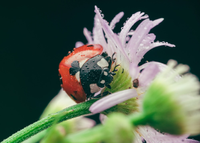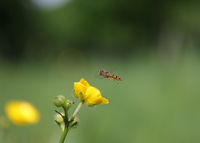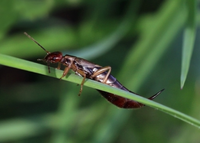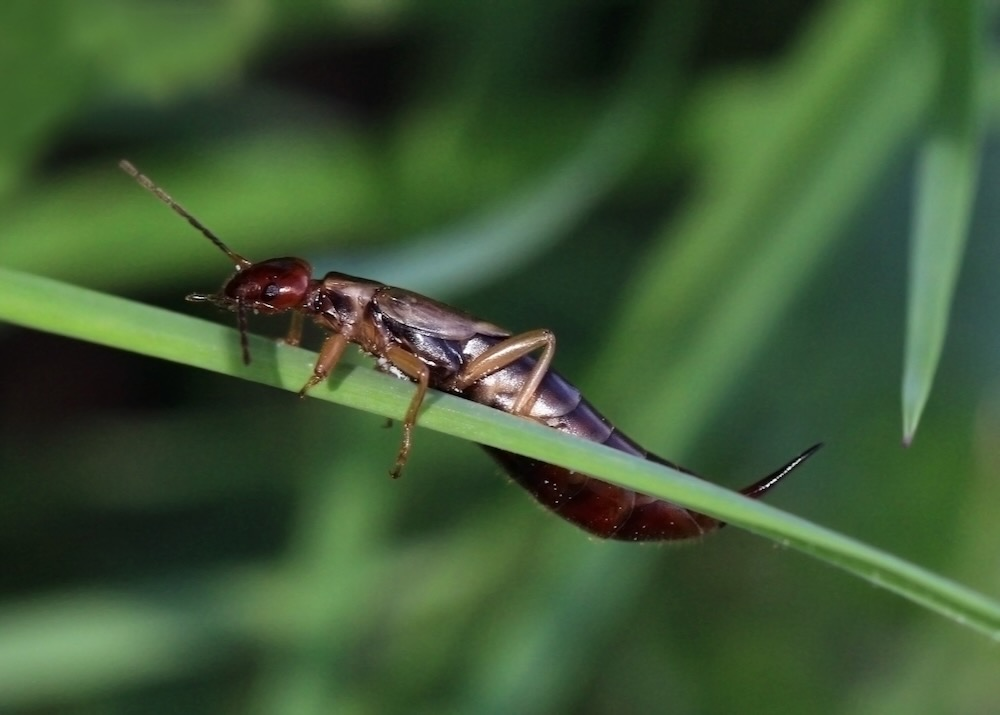Your garden is an ecosystem—and that means bugs
Everyone loves to show off their beautiful, prize-winning produce, but not many people like to acknowledge that bugs are part of the gardening process.
While nobody likes to think of bugs, we need them to produce good quality, organic food. It’s part of the ebb and the flow, or the yin and the yang of our gardens, and something we have to learn to live with to embrace the natural balance.
We're here to give you the 411 on which bugs are actually doing you a favour in the garden so that you don’t accidentally squish them—and so they can continue doing their job of being amazing garden companions.
1. Ladybugs Photo by Timothy Dykes on Unsplash
Photo by Timothy Dykes on Unsplash
Ladybugs or lady beetles—no matter what you call them—these ladies are in high demand for pest control. They eat aphids, scale insects, mealybugs, mites and leafhoppers. Be mindful that the ladybug larvae doesn’t actually look like a ladybug, but like a little crocodile insect so don’t squish them before you identify them because they are powerful pest controllers.
2. Praying mantis
 Photo by David Clode on UnsplashPraying mantises are probably the best predator to have in your garden because they can handle even the largest pests, like grasshoppers. The only downfall to these bugs is that they’re generalist predators which means they’ll also go after butterflies and ladybugs if there’s not enough other food or if it’s more convenient to eat a butterfly in that moment. Still, these mantises are more friend than foe to the gardener.
Photo by David Clode on UnsplashPraying mantises are probably the best predator to have in your garden because they can handle even the largest pests, like grasshoppers. The only downfall to these bugs is that they’re generalist predators which means they’ll also go after butterflies and ladybugs if there’s not enough other food or if it’s more convenient to eat a butterfly in that moment. Still, these mantises are more friend than foe to the gardener.
3. Syrphid flies Photo by Jack Blueberry on Unsplash
Photo by Jack Blueberry on Unsplash
The syrphid fly or hover fly isn’t a commonly talked about insect, but it is a double-whammy good bug for any garden. Its larvae/maggots crawl on garden foliage to eat aphids, thrips and caterpillars, helping to control their populations, while the adults help to pollinate your flowers. You’ll recognize syrphid flies as they look like little bees but without the sting, are much smaller, and they will be hovering over your flowers like helicopters.
4. Earwigs Wikimedia Commons
Wikimedia Commons
Gardeners have a love-hate relationship with earwigs and it completely depends on who you ask. Earwigs are tricky to have in the garden if they appear in large numbers as they can feed on the tender shoots of small plants. However, many species of earwigs are more likely to eat mites, nematodes and slugs from the garden (which makes them a good bug in our books). As long as you keep an eye on their numbers, earwigs are welcome friends here.
5. Parasitic wasps
 Wikimedia CommonsThese little bugs are small but mighty, and although you may not be able to see them, there are three different breeds out there doing their job of controlling pests. The Braconid wasp lays its eggs on the backs of the dreaded tomato hornworm, then the larvae feed inside the worm and eventually kill it. Trichogramma wasps are even smaller, but can lay their eggs inside the eggs of over 200 different insect pests, preventing them from even hatching. Finally, the tachinid fly looks like a small house fly but will prey on corn borers, grasshoppers, Japanese beetles, squash bugs and green stinkbugs. Hoorah for these wasps!
Wikimedia CommonsThese little bugs are small but mighty, and although you may not be able to see them, there are three different breeds out there doing their job of controlling pests. The Braconid wasp lays its eggs on the backs of the dreaded tomato hornworm, then the larvae feed inside the worm and eventually kill it. Trichogramma wasps are even smaller, but can lay their eggs inside the eggs of over 200 different insect pests, preventing them from even hatching. Finally, the tachinid fly looks like a small house fly but will prey on corn borers, grasshoppers, Japanese beetles, squash bugs and green stinkbugs. Hoorah for these wasps!
 Photo by Erik Karits on UnsplashAnd that’s not all of the good bugs, either! We can’t forget about ground beetles, green lacewings (pictured above), soldier bugs and predatory mites, all who either eat pests, their eggs or all of the above. There are a lot of beneficial insects out there, so it’s just about getting them to your garden. A healthy and diverse garden filled with perennial flowers, native plants, good soil, and a variety of veggies and herbs will help attract these beneficial bugs. You can read more about companion planting and pest management by clicking on the links to learn what to plant and how to attract beneficial insects to your garden without having to purchase them.
Photo by Erik Karits on UnsplashAnd that’s not all of the good bugs, either! We can’t forget about ground beetles, green lacewings (pictured above), soldier bugs and predatory mites, all who either eat pests, their eggs or all of the above. There are a lot of beneficial insects out there, so it’s just about getting them to your garden. A healthy and diverse garden filled with perennial flowers, native plants, good soil, and a variety of veggies and herbs will help attract these beneficial bugs. You can read more about companion planting and pest management by clicking on the links to learn what to plant and how to attract beneficial insects to your garden without having to purchase them.
It might often seem like sprays, herbicides, or fungicides are the answer—especially when we’re feeling frustrated about pests in the garden—but remember that your garden ecosystem will regulate itself. If your garden space is new, it will take a little bit to get things into balance, but once you do, it’ll be a happy garden, happy food and a very happy planet.



